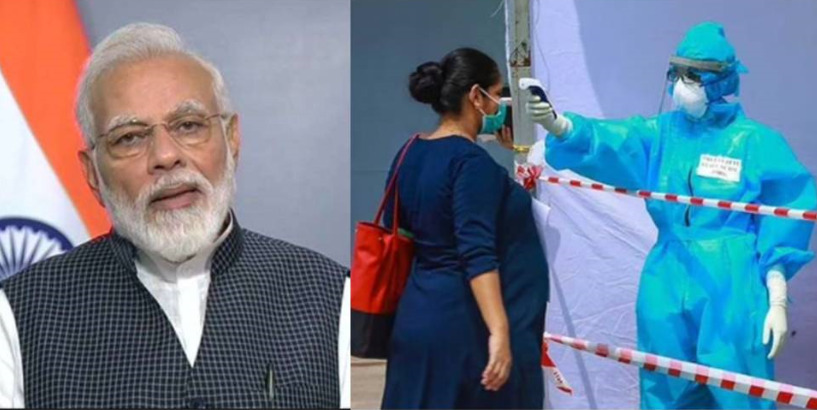It’s been more than a year since the first case of coronavirus was reported in mainland China and over 10 months since India saw the first COVID-19 case (January 30). While the entire world saw astronomical high curves with the cases and fatality rate meandering towards the upward side, a country with a population above 1.3 billion continued to perform admirably well. Now, with the vaccines starting to roll out and hopes of the world going back to its old-normal, things are starting to clear up. However, India through the government’s sustained efforts has managed to nearly flatten the curve.
According to a Business Standard report, India on Thursday reported a net reduction of 6,616 to bring its count of active coronavirus cases down to 372,293, the lowest level since July 18. The daily reduction in cases means that India’s share in the global coronavirus cases has gone down to a lowly 1.89 per cent. With 37,725 new recoveries every day, India’s recovery rate has improved to 94.74 per cent whereas the fatality rate remains unchanged at 1.45 per cent.
India’s doubling time for total cases stands at 214.4 days, and for deaths at 238.2 days. Overall, five states with the biggest 24-hour jump in total cases are Maharashtra (4981), Kerala (4875), West Bengal (2956), Delhi (2463), and Rajasthan (1511)—incidentally, all are non-BJP states.
The count of recovered coronavirus cases across India now stands at 9,253,306 – or 94.74 per cent of total caseload – with 37,725 new cured cases being reported on Thursday. Now the ninth-most-affected country by active cases, third by fatalities, and second by total cases, India has added 232,407 cases in the past seven days. Here are the key takeaways from the coronavirus data released by the Union Ministry of Health and Family Welfare (MoHFW) on Thursday (December 10, 2020).
India has made a remarkable improvement despite going through a bustling festive season. The armchair epidemiologist during the beginning of the pandemic had predicted dystopian numbers to garner the TRP’s and the likes of Barkha Dutt had reported them with much tenacity. After all, honest journalism is instilling a fear of paranoia amongst an already frightened public.
Many are saying these projected numbers by Ramanan Laxminarayan will cause panic. I disagree. I think him telling us that India could get 300 to 500 million #Corona cases by July is a call to action. It brings home gravity of what could happen if we don't isolate diligently https://t.co/Xumlwkwk6o
— barkha dutt (@BDUTT) March 21, 2020
India had first entered into lockdown in March (March 24, to be precise) and in the first few phases of the lockdown or the Janta curfews, the Union government had taken the rein of the responsibilities in its hands solely. Despite the state governments asking for more autonomy, the Union government stood steadfast and undertook the majority of planning for the long-drawn battle to come ahead.
In a country like India, where it is highly difficult to inculcate a habit amongst the masses, PM Modi through his repeated TV appearances and ‘Mann ki Baat’, taught the public to don the face masks, wash hands regularly, and practice effective social distancing. When the public was ready with the reality of the new-normal—the government opened the country in a phased manner and now the cities and state are working in full force.
While the economy dived, as was with the entire world — in recent weeks it has shown a U-shaped recovery and the analysts and economists are cautiously optimistic about the growth story in the months to come.
With the Oxford-AstraZeneca vaccine showing promising potential and the Serum Institute of India (world’s biggest vaccine manufacturer) looking after the mass production and distribution of vaccines, especially in India and around South Asia — the future looks much better. PM Modi has himself visited the compounds of different laboratories currently developing the vaccines and he has received a positive response from each one of them.
Read more: India grows by 23 per cent! India’s GDP growth rate post lockdown is picking up at a breakneck pace
India should indeed be a model for the rest of the world to follow. The West, which tries to harp upon India by projecting itself superior should surely take a lesson or two in how to handle a raging pandemic.
